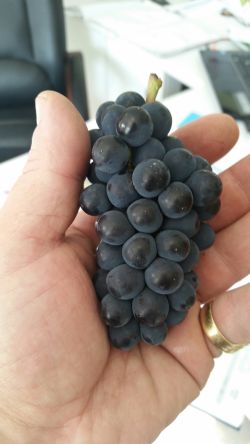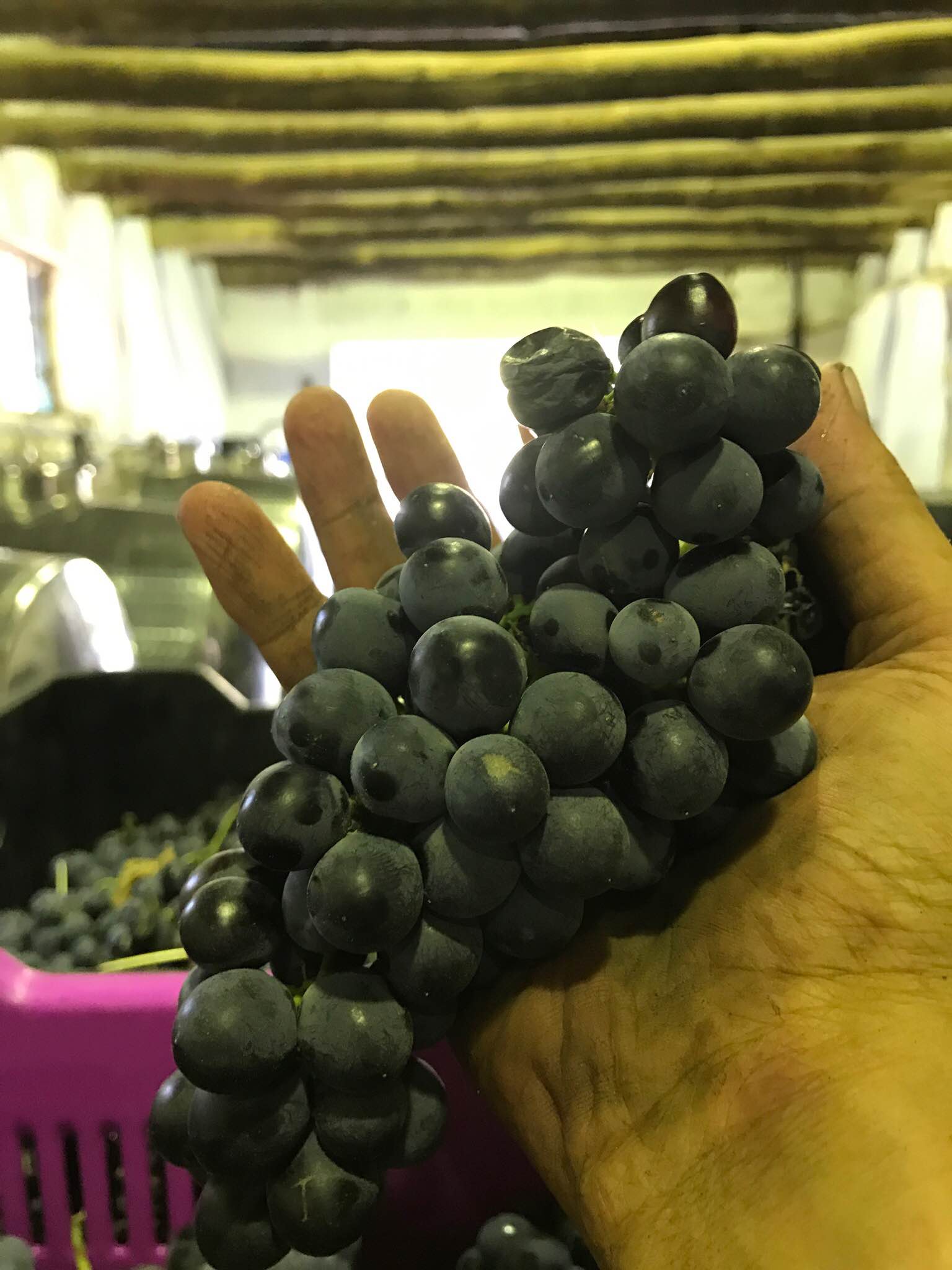How Pinotage got its name
Pinotage – it’s a word that runs easily off the tongue and, thanks to winemakers’ greater understanding of how to get the best out of it, including planting vines in cooler areas, it’s a wine that today runs more easily down the throat.

Koen Roose of Spioenkop - photo of pinotage
The vine itself is a cross of Cinsaut and Pinot Noir, bred in 1925 by Professor Abraham Izak Perold. It’s a story of legend how Perold forgot about the four seedlings resulting from the cross and planted in his garden when he left the University of Stellenbosch and moved to KWV. Suffice to say, the seedlings were rescued and one went on to become the mother of all the Pinotage vines we have today.

Ryan Mostert of Terracura with the one of a bunch of cinsaut
Some will have raised an eyebrow, wondering how the name Pinotage was arrived at, when the cross is half Cinsaut.
Pinot derives from Pinot Noir but the ‘age’ suffix was taken from Hermitage, the name Cinsaut was known by in the Cape at the time. Quite why is uncertain as, from the French point of view, Hermitage is an appellation in the Northern Rhône, where the only red grape permitted is Syrah. Cinsaut comes from further south, where it’s one of 13 varieties permitted in Châteauneuf-du-Pape, and further south still, from Languedoc-Roussillon.

Pinot Noir
As far as the Cape’s viticultural history is concerned, Perold wrote in his 1927 Treatise on Viticulture that Hermitage was first planted here in the 1880s. Perhaps the importation of vines wasn’t so strictly monitored in those days and any number of confusions, including mislabelling, could have arisen between the originating nursery and Cape farmer.
In that same treatise, Perold says he identified Cape Hermitage as Cinsaut, noting also that the variety isn’t grown in that area of the Northern Rhône. Nevertheless, the incorrect name remained in use until 1935, when South Africa and France signed the Crayfish Agreement. In this document, France agreed to import South African crayfish, while in return South Africa agreed not to use French geographical names (for instance, Hermitage).
That same year, vine material from those four seedlings was grafted onto rootstock in Perold’s former official University of Stellenbosch residence, Welgevallen.
It is said Perold and Professor CJ Theron, Dean of Oenology at Stellenbosch University and involved with viticulture at Elsenburg Agricultural College, came up with the name, Pinotage, while looking at and discussing those first grafted vines.
Were these two knowledgeable and highly qualified wine men being pragmatic when they contracted the name of the two parents, one a historic inaccuracy?
Try any other combination, using Cinsaut rather than Hermitage with Pinot, and I doubt any would run as easily off the tongue as Pinotage.
Thanks to Peter F May, founder of The Pinotage Club (www.pinotage.org) for his assistance with information.
– Angela Lloyd